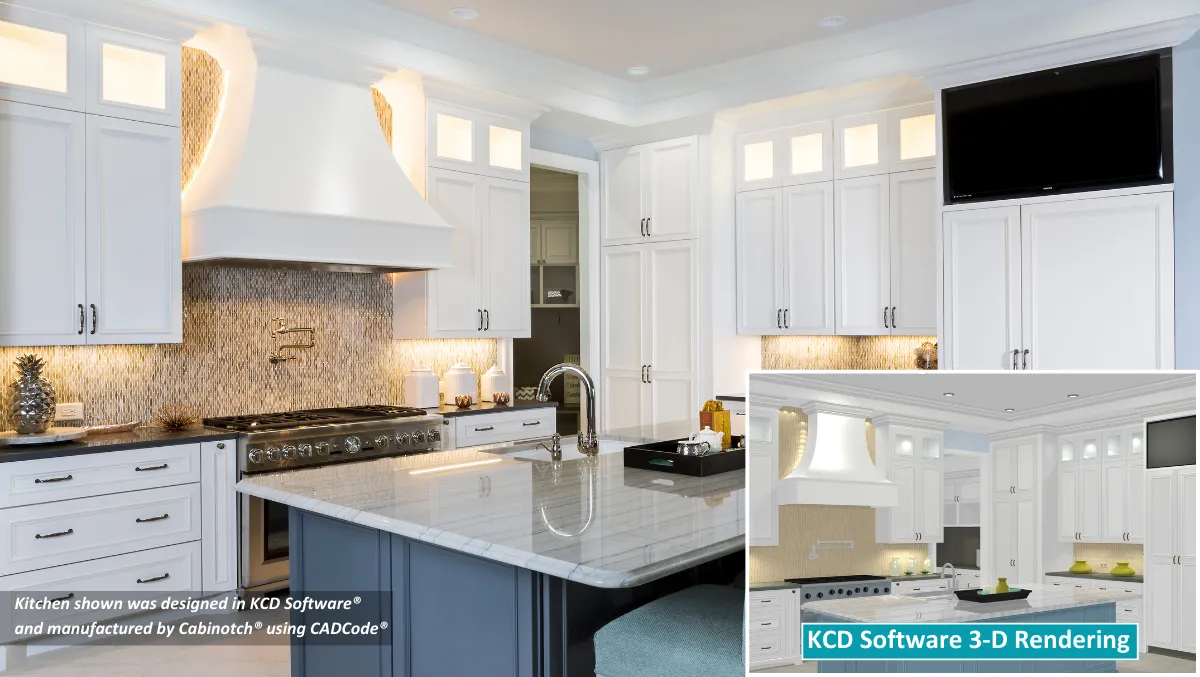Table of Contents
 Bricks or clicks?
Bricks or clicks?
In the evolving world of retail, savvy businesses know it’s not just one or the other that boosts their bottom lines.
Instead, those retailers are using bricks and mortar and online shopping in tandem, often employing experiential retail as a powerful way to provide consumers with personal, engaging experiences.
Often referred to as experiential retail, shopping, buying or purchasing, it’s a concept that typically involves a store in which consumers do more than buy. Through a store’s engaging and interactive design, often including panel-based fixtures and casegoods, customers experience a brand or product and therefore create a memory that fosters a strong relationship with the retailer.
“Every store is trying to create a unique experience in their environment to capture an audience,” said Jamie Poulos, design director for OPTO International, a designer and manufacturer of retail store fixtures.
“We help retailers curate the experience by offering them retail displays that capture the consumers attention.”
That often means OPTO works with retailers to design a floorplan that moves the consumer around the store.
 “When designing a store, we incorporate subtle hints of the brand through the finishes and materials to help curate the experience for the consumer,” Poulos said. “The in-store experience is personalized by the environment, by the product selection and by the sales associate that helps the consumers with their purchases.”
“When designing a store, we incorporate subtle hints of the brand through the finishes and materials to help curate the experience for the consumer,” Poulos said. “The in-store experience is personalized by the environment, by the product selection and by the sales associate that helps the consumers with their purchases.”
Jo Rossman is publisher/editor of Shop!, the global trade association dedicated to enhancing retail environments and experiences. It represents more than 1,500 companies from 30 countries.
Retail is evolving, Rossman said, and retailers are looking to use all of their platforms as effectively as possible.
“In some cases, that might mean rightsizing the number of stores in a portfolio while improving the integration of digital services into the store environment,” Rossman said. “In other cases, retailers that started out online are opening physical stores to better understand their customers, meet shoppers’ tactile and fit needs, expand their reach, better connect with consumers and so forth.”
As consumers become more comfortable with different ways to shop, Rossman said, retailers have gained the luxury of using their brick-and-mortar floor space to do much more than display product. If retailers don’t have to stock as much inventory because they can ship directly to their customer, floor space is freed for other uses.
“Now the store can be a place to forge and maintain brand connections with consumers on a deeper level,” she said.
To that end, Rossman said forward-thinking retailers are taking advantage of this by:
–Making the store a community gathering space.
–Offering in-store education about products and services
–Staging in-store events that appeal to their target demographic.
–Providing additional services such as product customization, design consulting or repair services.
–Providing more product demos, sampling and services.
As examples, Rossman pointed to several retail stores that are succeeding with experiential retail, a couple of which recently won Shop! Design Awards.

b8ta: Store of the Year
The hardline specialty store in Santa Monica, Calif., is said to be a harbinger of retail’s future because of the way it changes the experience for consumer electronic retail, the role of a bricks-and-mortar store and even the relationship between customer and manufacturer. The store, pronounced “beta,” brings products directly from start-up manufacturers to the consumer, captures data from hands-on consumer interactions and feeds it back to the makers to help research and development and marketing efforts.

Designed by Gensler, the store is divided into light and dark sides. The light side, with porcelain flooring and stained oak fixtures, focuses on individual products. The dark side, with engineered dark oak wood flooring and black walls and ceilings, is targeted toward complex interactions and immersive experiences.
Leesport, Pa-based Fleetwood provided millwork and fixtures.
 “b8ta is fascinating from a retail perspective,” said Kevin Boo, Fleetwood’s account executive on b8ta and several other Gensler-designed projects. “It’s a real draw for their customers who know they can go into the store and see, touch and play with the latest and greatest in consumer electronics.”
“b8ta is fascinating from a retail perspective,” said Kevin Boo, Fleetwood’s account executive on b8ta and several other Gensler-designed projects. “It’s a real draw for their customers who know they can go into the store and see, touch and play with the latest and greatest in consumer electronics.”
Boo said several retailers traditionally grounded in online and catalog operations are opening retail stores that give customers in-person experiences.
High-end home retailers Frontgate and Ballard Designs are two examples.
“It’s been really interesting to me to see retailers going toward bricks and mortar,” he said. “You’ve got new concepts like b8ta, but now we’re seeing these other companies open stores.
“(Frontgate and Ballard) both have a huge following, and they know where to open so they can give customers a chance to touch and feel and then order without hesitation. Bricks and mortar and online really complement each other. Some people are satisfied to read the specs only and order. Others want to experience the product first.”
Coty Fume Scent Lounge: Fixture of the Year
Designed by dkstudio architects, the store in Toronto’s Yorkdale Shopping Centre features impressive millwork, fixtures and visuals engineered, fabricated and installed by Toronto-based Evenstscape.
Conceived to attract millennial shoppers, Coty’s scent lounge offers a digital and interactive experience that engages sight, sound, touch and smell. Highlights include a complex curved interactive bar, a spiraling overhead canopy and an arc of freestanding digital towers that can each represent an individual brand or, combined, offer a full digital concert of images and videos.

The glistening display bar features double curves and an exaggerated cantilever. The fixture’s MDF substructure supports a cladding of heat-formed solid-surface material. The cantilever is made from a specialized high-density material shaped with 5-axis milling. The solid-surface top with its beveled edge is 4 inches thick. To form the curved base, nine layers of ½-inch-thick solid-surface material were milled into smooth contours using a combination of CNC and hand finishing.
The towers surround the fragrance bar and are covered in a durable matte black laminate chosen for its resistance to scratches, heat, shock and fingerprints.
“We are seeing more projects that incorporate interactive digital technology,” said Elaine Allen-Milne, Eventscape’s marketing manager. “These designs provide consumers with a sense of personal engagement with the products and environments. Once they have a personal connection with a brand, they are more likely to share it on their own social media channels, attracting more potential customers.”
Fostering the connection
 Rossman said another example of outstanding experiential retail is a Finish Line store in Chicago designed by CallisonRTKL, a global architecture, planning and design firm.
Rossman said another example of outstanding experiential retail is a Finish Line store in Chicago designed by CallisonRTKL, a global architecture, planning and design firm.
“For the Finish Line project, we incorporated panel systems in a number of different ways to support a number of different experiences,” said Michael Trenary, a senior designer with CallisonRTKL.
The design gives Finish Line flexibility to quickly and efficiently change displays while also giving each brand within the store the opportunity to layer in its own identity.

Trenary agrees there’s a perceived competition between bricks-and-mortar stores and online shopping.
But the two work best in tandem, he said.
“Both channels have their strong suits,” he said. “It’s easy to go to a website, instantly find and purchase, for example, your favorite shampoo and have it delivered to your door within an hour while you’re out for brunch with friends.

“But on the flip side, physical stores have many strong suits that digital can’t compete with. Trying on clothes is impossible on a mobile app. Live chat and digital messaging can’t beat face-to-face customer service. Those are the places and experiences in the retail environment where we as designers focus our efforts.”
CallisonRTKL, he added, wants in-store environments to go beyond novelty and kitsch in order to foster the connection between the consumer and the brand through storytelling and interpersonal interaction.










